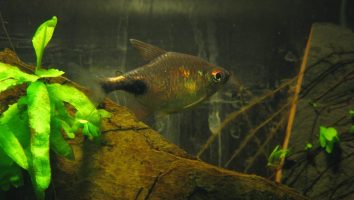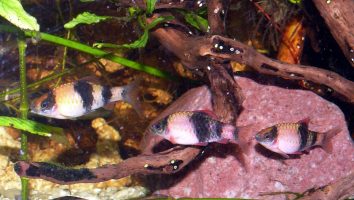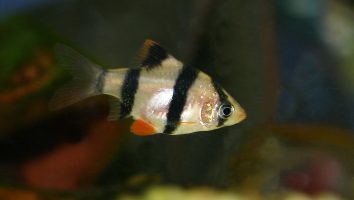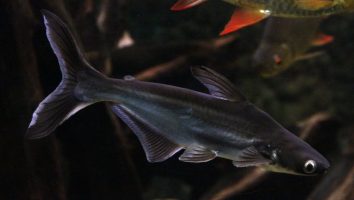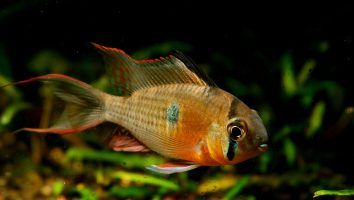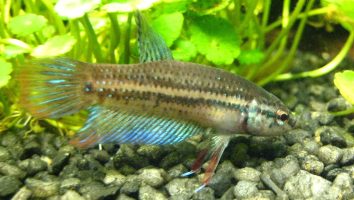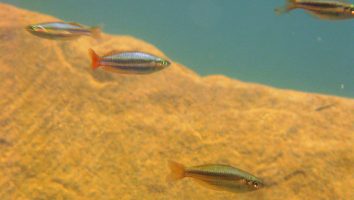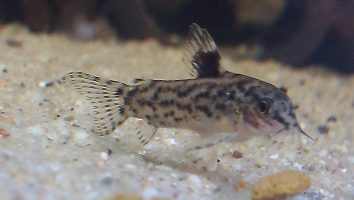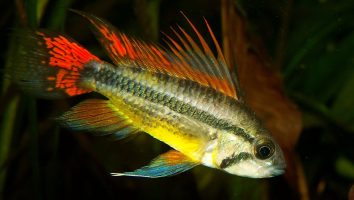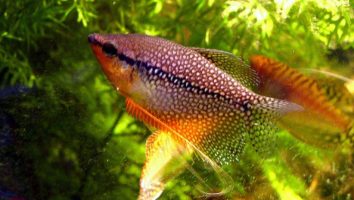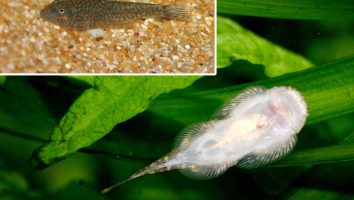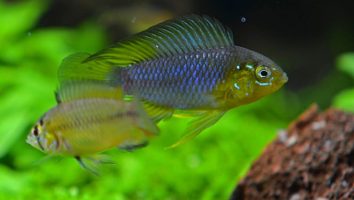The Green Spotted Puffer is a freshwater fish that is native to Southeast Asia. They are a popular fish in the aquarium trade due to their unique appearance and personality.
This guide will teach you everything you need to know about Green Spotted Puffer care. You’ll learn about their diet, size, lifespan, and more!
Table of contents
Species overview
Green Spotted Puffers (Tetraodon nigroviridis) are native to a wide range of Southeast Asia, including Indonesia, Malaysia, Singapore, and Thailand. They are most commonly found in brackish or saltwater mangrove forests and estuaries.
These fish are known to be very hardy and can adapt to a wide range of water conditions. However, they will typically do best in slightly brackish water that is well-oxygenated and has a moderate current.
Green Spotted Puffers are relatively small fish, only growing to be about 4-6 inches in length. However, they are very active and require a lot of space to swim. They also need plenty of hiding places and places to explore, so a well-decorated tank is a must.
These fish are not recommended for beginners. They are known to be aggressive, and their diet of live food can be difficult to maintain.
Appearance
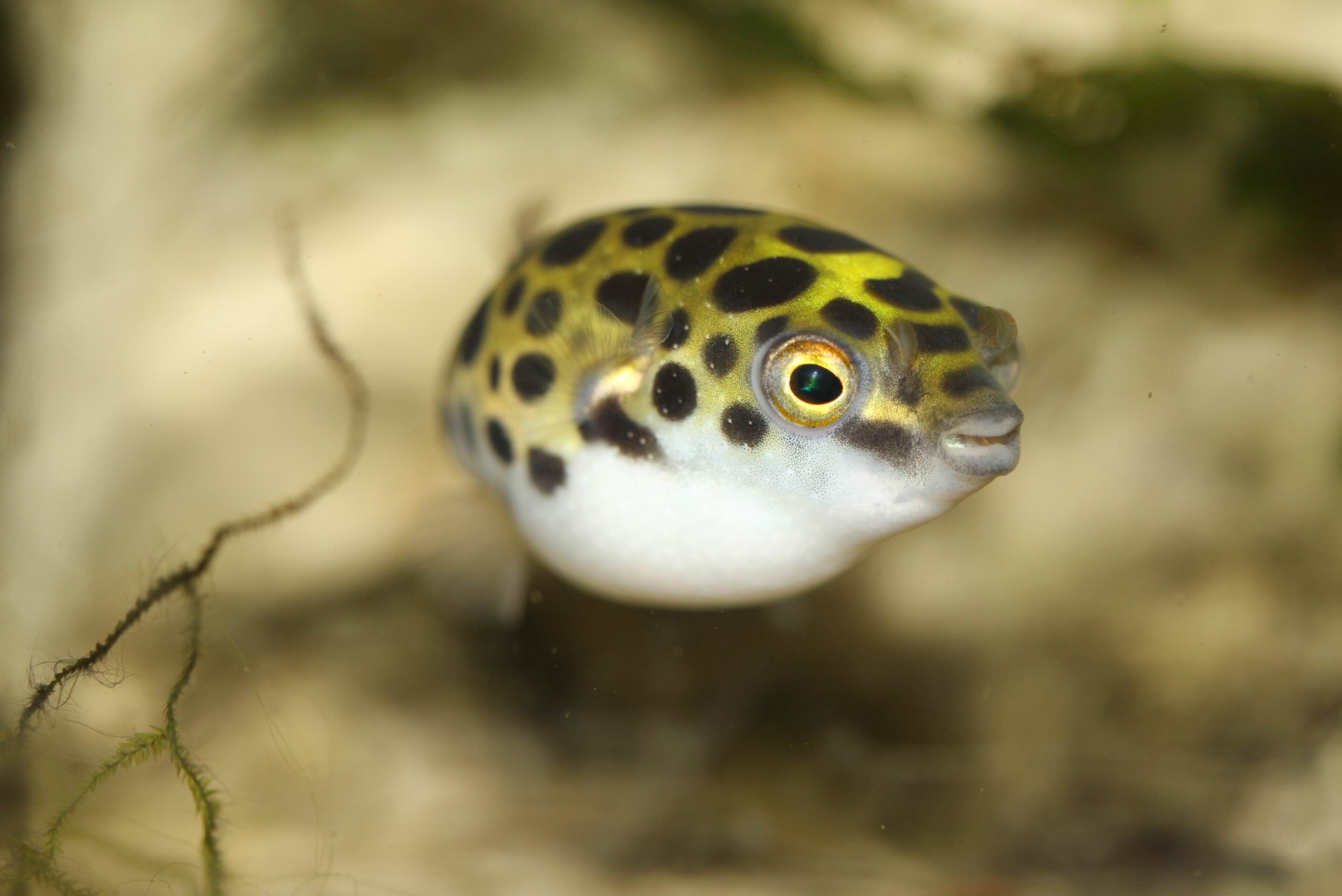
The Green Spotted Puffer is an easily recognizable fish thanks to their unique appearance. As the name suggests, these fish have green spots all over their bodies.
The base color of the Green Spotted Puffer is usually some shade of brown or tan. The spots can be a variety of different shades of green (from light to dark).
These fish have a very stocky body that’s wider than it is tall. They have a rounded belly and their backs taper off towards the tail.
The fins on the Green Spotted Puffer are all rather small in comparison to the rest of their body. The dorsal fin is the largest of the bunch and it starts about two-thirds of the way back.
The pectoral fins are small and round while the anal and ventral fins are even smaller. The caudal fin is forked and symmetrical.
One of the most notable features of the Green Spotted Puffer is their teeth. These fish have sharp teeth that they use to eat hard shelled prey.
Lifespan
Green spotted puffers have a lifespan of 5-8 years in captivity, but they can live up to 10-15 years with proper care.
The main factor that will impact their lifespan is the quality of the water they’re kept in. Green spotted puffers are very sensitive to poor water quality and it can shorten their lifespan significantly.
Size
Green Spotted Puffers can grow to be up to 6 inches in length, but the average size is usually between 4-5 inches. These fish are known for being one of the smaller pufferfish species.
Tank
Tank Size
The recommended minimum tank size for green spotted puffers is 30 gallons. If you want to keep more than one pufferfish in the same tank, you will need an additional 20 gallons for each fish.
It’s important to note that these fish are not recommended for beginners. They are very sensitive to water quality and changes in their environment. They also have a reputation for being aggressive, so you will need to do your research before adding one to your tank.
Water Parameters
Green spotted puffers are one of the more delicate freshwater fish when it comes to water parameters. They come from slow-moving brackish waters in Southeast Asia. As a result, they’re not as tolerant of changes as some of their cousins.
To replicate their natural habitat as closely as possible, you’ll need to maintain the following water parameters.
- Water temperature: 74 to 82 degrees Fahrenheit
- pH levels: 7.0 to 8.5
- Water hardness: 8 to 12 dGH
- Alkalinity Levels: 2 to 4 dKH
What To Put In Their Tank
Green Spotted puffers are a little different when it comes to tank mates. They can be kept with other fish, but there’s a greater chance of aggression.
Because of this, we recommend that you set up their tank with just plants and decorations. This will give them plenty of places to hide and feel secure.
When it comes to the plants, go with something that can withstand a little abuse. These fish like to nibble on vegetation, so something like Hornwort or Java Moss is a good choice.
The substrate can be anything you want, but we recommend something on the softer side. These fish like to dig and root around, so a harder substrate can lead to cuts and scrapes.
As for decorations, feel free to get creative. Driftwood, rocks, and caves are all great choices. Just make sure that anything you put in their tank can’t be swallowed or cause any injuries.
Common Diseases
Green Spotted Puffers are actually quite hardy fish. They’re not prone to getting sick and can even withstand less-than-ideal water conditions for short periods of time.
However, that doesn’t mean that they don’t ever get sick. Just like any other fish, there are a few things that can go wrong.
The most common disease that affects these fish is ich. This is a parasitic infection that will show itself as white spots on the body of your fish.
If left untreated, ich can be fatal. However, it’s relatively easy to treat if you catch it early.
Another thing to watch out for is any sort of injury. Green Spotted Puffers are notorious for being nippy, so it’s not uncommon for them to accidentally bite each other (or their owners!).
If you notice any sort of injury, it’s important to clean it and keep an eye on it. Injuries can easily become infected, and that can lead to serious problems down the road.
As long as you keep an eye on your fish and take good care of them, they shouldn’t have any problems. Green Spotted Puffers are actually quite hardy fish and can live for a long time if they’re well cared for.
Behavior & Temperament
The green spotted puffer is a very unique fish with a personality to match. It’s not uncommon for aquarists to become very attached to their puffers because they’re so interactive.
These fish are very intelligent and are known to recognize their owners. They can also learn tricks, which is something you don’t see every day in the fish world.
Puffers are also one of the only fish that can show true emotions. They can get happy, sad, excited, and even angry. When they’re angry, they might start to nip at other fish in the tank. This is why it’s important to only keep puffers with fish that can defend themselves.
Green spotted puffers are also known to be escape artists. They’re very good at finding ways out of their tanks. So, if you have one of these fish, you need to make sure your tank is secure.
Tank Mates
Green spotted puffers (GSPs) are a bit more challenging to keep than other freshwater fish. They’re not impossible, but they do require a bit more care.
One of the most important things to remember with these fish is that they’re predators. They’re not going to hesitate to snack on smaller tank mates.
As a result, you need to be very careful when choosing green spotted puffer fish tank mates. The ideal tank mate is a fish that’s too large to be eaten and can handle similar water conditions.
Some good choices include:
- Oscar Fish
- Green Terror Cichlid
- Convict Cichlid
- Jack Dempsey
- Firemouth Cichlid
- Clown Loach
Breeding
The biggest challenge of breeding green spotted puffers is getting them to spawn in the first place. These fish are notoriously difficult to breed, and most breeders have to resort to artificial methods.
The best way to encourage spawning is to mimic the conditions of their natural habitat. Green spotted puffers are found in brackish waters in Southeast Asia. The water there is warm (around 82 degrees Fahrenheit) and has a high salinity level.
To recreate these conditions, you’ll need to set up a brackish water tank. Start with a freshwater tank and slowly add salt until the salinity level reaches 1.010. Then, raise the temperature to 82 degrees.
You’ll also need to add some live plants and plenty of hiding places. Green spotted puffers like to have a lot of places to hide. Driftwood, caves, and live plants all make good hiding spots.
Once the tank is set up, add a pair of green spotted puffers. The best way to sex them is to look at their ventral fins. Males have longer and more pointed ventral fins than females.
It’s best to keep only one male and one female together. If you have more than one male, they will fight for dominance.
The next step is to wait and see if they spawn. Green spotted puffers are notoriously difficult to breed, so don’t get your hopes up. If they do spawn, you’ll see the female lay a bunch of eggs on a flat surface. The male will then fertilize them.
After that, it’s best to remove the adults from the tank. They will eat the eggs if given the chance.
The eggs will hatch in about four days. When they do, you can start feeding the fry live baby brine shrimp.
Conclusion
The Green Spotted Puffer is a great fish for anyone who wants a challenge. They’re not the easiest fish to take care of, but they’re definitely worth it.
These fish are absolutely beautiful and full of personality. They’re also very intelligent, which means they can be trained to do tricks!
If you’re up for the challenge, we say go for it. But if you’re not, that’s OK too. There are plenty of other great fish out there that will be a better fit for you.

